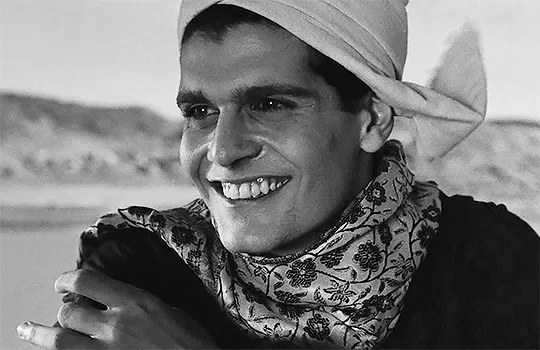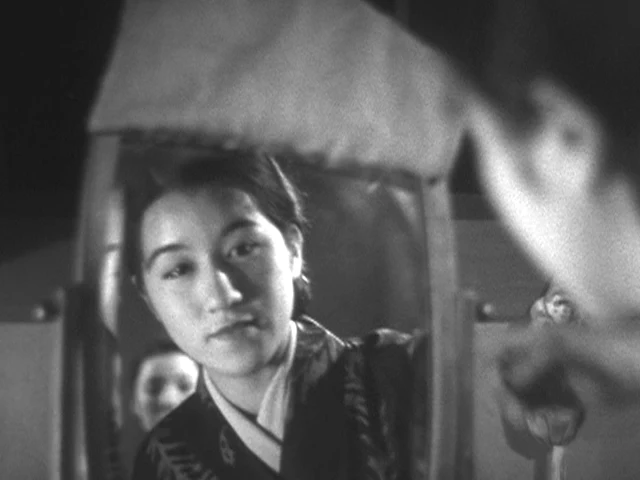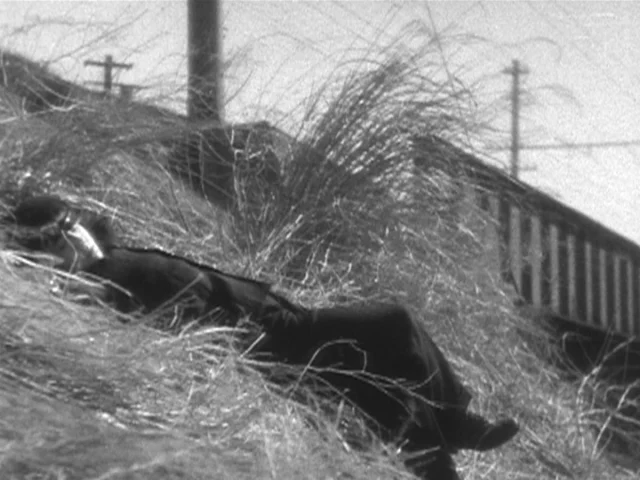 |
| Omar Sharif in The Blazing Sun |
With his big brown eyes and gleaming smile, Omar Sharif was a natural for the movies, and making his film debut, billed as Omar El Cherif, in Youssef Chahine's The Blazing Sun, he proved he could act too. Chahine's melodrama gets off to a bumpy start with some clunky exposition and a bit of scenery chewing from the villains in the piece, wealthy landowner Taher Pasha (Abdelwareth Asar) and his nephew Reyad (Farid Shawqi), but once Sharif appears on the scene and encounters his leading lady, Faten Hamamah, things begin to come together with enough plot twists, suspense, and romance to satisfy even a jaded movie-watcher like me. Sharif plays Ahmed, trained as an engineer, who returns to his village to help his father, Saher Abdel Salam (Abdulwareth Asar), and the peasants harvest a sugarcane crop. But Taher Pasha and Reyad are conniving to keep the peasants from making money and getting uppity. Reyad, whom we first see shooting a cat running across the lawn of his uncle's palatial estate, suggests dousing another poor cat in gasoline, setting it on fire, and letting it loose in the sugarcane. The Pasha is somewhat less sadistic: Just flood the fields, he says, and Reyad complies. Saher and the peasants are ruined. Meanwhile, the Pasha's beautiful young daughter, Amal (Hamamah), is returning home after an absence of many years. While Reyad is driving her from the station, Ahmed spots her and calls out her childhood nickname, "Potatoes." She's delighted to see her childhood boyfriend again, especially since he now looks like a 22-year-old Omar Sharif, much to Reyad's disgust. And so everything is set up for a fateful conflict, which involves a wrongful murder conviction, several other deaths, and a Western-like showdown in the ruins of the temple at Luxor. Handsomely photographed and well-acted, The Blazing Sun doesn't have as much social comment as other films by Chahine that I've seen, but it's thoroughly entertaining.


















